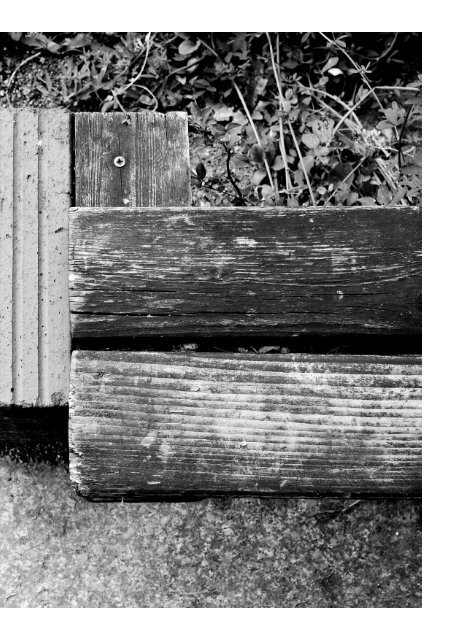Download PDF - Tabloid
Download PDF - Tabloid
Download PDF - Tabloid
Create successful ePaper yourself
Turn your PDF publications into a flip-book with our unique Google optimized e-Paper software.
p. 2 BMW GUGGENHEIM LAB BERLIN 2012 www.thetabloid.org
www.thetabloid.org BMW GUGGENHEIM LAB BERLIN 2012p. 5longer an autonomousartifact, but grafted like aparasite to a temporaryhost--exploited a massivesystem of efficientdistribution which, on theone hand, dispersed itthroughout the city and,on the other, tapped intohabitual behaviors of thelocal population to furtherenlarge the territorythrough which the tabloidtravelled.But, as a parasite,the tabloid may burrowdeeper than thesedistributive systems. Itmay tunnel down intothe substructures of thestandard tabloid, into thevery codes that organizeit as both a cultural/socialartifact or sign and a
p. 6 BMW GUGGENHEIM LAB BERLIN 2012 www.thetabloid.orgcannot avoid markingthe parasitical “material.”Knowing this, one has toconsider how this multiplicativeor serial elementmay be employed fruitfully.One works with it.And what products canbetter exploit processesof multiplication thanthose with the capacityto organize themselvesmodularly, in potentiallyinfinite spreads; objectsthat can couple intolarger continuums thatthemselves become newand different objects? Amodular pattern printedon a tabloid page ispregnant with inexhaustiblepotential. The patternfavors and can participatein the configuration ofunit within a productivesystem.The newspaperprinter is, above all, adistributor of multiples,of identicals, in the sameway that a machine forinjecting plastic or onefor stamping metal canbe this. Reconsideringsuch a system in its preculturalmoment, thatis, suspended beforethe usual social functionof its products hasbeen enabled, allowsus to insert an alteredproduct with an alteredsocial function. With thisalteration, the systemmultiplies an object thatis different from the oneit usually produces. Butthe multiplicative andserial mode of productionis essential here. Its logic
www.thetabloid.org BMW GUGGENHEIM LAB BERLIN 2012species are prone tothemselves, due to thevery nature of the systemthey have taken ashost, take on a genericcharacter; they, too, likeany generic object, willbe optimized to thepoint of abstraction, towhere they take on thecondition of somethinginevitable in the city, likelinoleum tiles, drop ceilingtiles, and sheetrockpanels.In Quebec City,we employed a schematicversion of a vernaculardecorative pattern thatwe found on the facadeof a house in LittleHaiti--a spread of banalfaux stones. A questionquickly emerged:How can this patternovercome its suspiciousquality as a parasite?How does it slip into akind of normality, of “genericity”?It has to exploitp. 7TABLOID special issue N.1, 2012contributors:Anna Rosa StohldrelerGolnar Mehboubi NejatiMini SmuldersNathan JohnSebastian BrunnerStefan AltenbrunnIngrid HimmelHans HimmelMira KongsteinOdey CurbeloBabette Marie WernerThis tabloid was produced during atwo days workshop forBMW Guggenheim LAB. Berlin, 2012.<strong>Tabloid</strong> is an ongoing project by GeanMoreno and Ernesto Orozawww.thetabloid.orgambiguity, reappropriatefamiliar codes. Theinsertion of a foreign sign(say, the reproductionof false stones) needs tobe associated to a textor some other commonelement in the languageof the newspaper. Itneeds to activate otherfunctions, be they indicative,illustrative, com-a plane or a structure. Itcompels all the identicalunits spit out by theprinting press to producea condition--emergent inthe relationship betweenthem--that is greater thanthe individual object andthat exists at a distancefrom the individual object’susual moment andform of consumption.Methodologically,the project may deal lesswith the alteration of ageneric product than witha “genetic” interventionin its productive substrate,with planting aninvasive cultural sign inthe optimized space ofgeneric production. Withan awareness that thequalities of this invasive
www.thetabloid.org BMW GUGGENHEIM LAB BERLIN 2012p. 9accompanied the patterninserted in the QuebecCity weekly, which soughtto mimic (in structure,if not in content) anyrun-of-the-mill tabloidarticle with its geometryof columns and requisiteaccompanying photos,we spoke of a runningsurface of plywoodsheets that was coveringcertain sections of Miamiin the wake of a massivewave of home foreclosures.Banks seal emptyhouses with plywoodsheets over the doorsand windows to keepsquatters, junkies andthieves out. Many peoplein Quebec associated,strangely to our ears, therock pattern produced byHaitian immigrants (as amicroscopic version) tothe multiplying plywoodplane. One, the rock pattern,we thought, wasan effort to claim at thelevel of the home and thefamily, and by deployinga decorative structure,space for a particularvalue system. The other,the plywood sheets, wethought as potentiallyendless urban wallpaperthat spoke of the massiveforce of an economiccrisis. In fact, we proposein the text that the knotsand the grain of theplywood added up to therepeating “decorative”pattern of a catastrophe
p. 10 BMW GUGGENHEIM LAB BERLIN 2012 www.thetabloid.orgthat no one could figureout how to avert. The goalin bringing these twovery different patterns(and worlds) togetherwas to highlight differentpatterns of expansion--patterns that, in theirforceful multiplication,in the ineluctable characterthat their growthassumed, served asmetaphors for the waywe imagined our tabloid--and tabloids in general--spreading through thecity.There is a virtualor abstract plane, afterall, on which the 15,000modules distributed inQuebec City can be collected.On it, they producesan enormous aliensurface that threatens toblanket the entire city.Like the snow that coversits streets every winter,but climbing the city’svertical surfaces instead.There is also a map--perhaps not yet drawnby real all the same--ofthe truck routes throughwhich VOIR is delivered.There is a potentialdrawing that documentsthe distribution pointswhere the stacks ofweeklies are dropped off.It would be made up ofthe doorways and stoopsin front of bars, recordshops, bookstores, cafes,stores, fast food restaurants,cultural institutions,and student centers.Maybe it’s just a setof coordinates or addressnumbers. Each of themetal stands and bins inwhich VOIR is kept insidethese spaces, in turn, is anode in yet another possiblesketch of tangledtrajectories.There is, finally,an imaginable theoreticalplane, a narrativespace, on which thefinal consumption anduse of the pattern canbe documented. Oneimagines the Little Haitirocks, having migratednorth, further north thatis, used as wallpaper in arecord store, in a dorm,in the bathroom of abar; or used as a doileor as a book cover. As apicture frame. The patterncan be used to wrapbeer bottles outside thebodegas where it is illegalto loiter and drink. Itcan be employed to coverand replace dislikable oroutdated posters, to runover bare city walls, andto wrap around telephonepoles lined withunpalatable concert flyersand record release partyannouncements. It canbe used as a decorativelayer over the glass of allthe empty storefronts ina faltering mall. It wouldcertainly brighten themood of the place. It cancover the plywood sheetsthat seal homes that havebeen foreclosed on or therotting wooden fencesaround abandoned constructionsites. It can beused by some old ladiesto dye their gray hair.Once the informationvectors of QuebecCity were contaminated,the expansion of the LittleHaiti rock pattern threatenedto be endless, todissolve into the city.
www.thetabloid.org BMW GUGGENHEIM LAB BERLIN 2012p. 11


